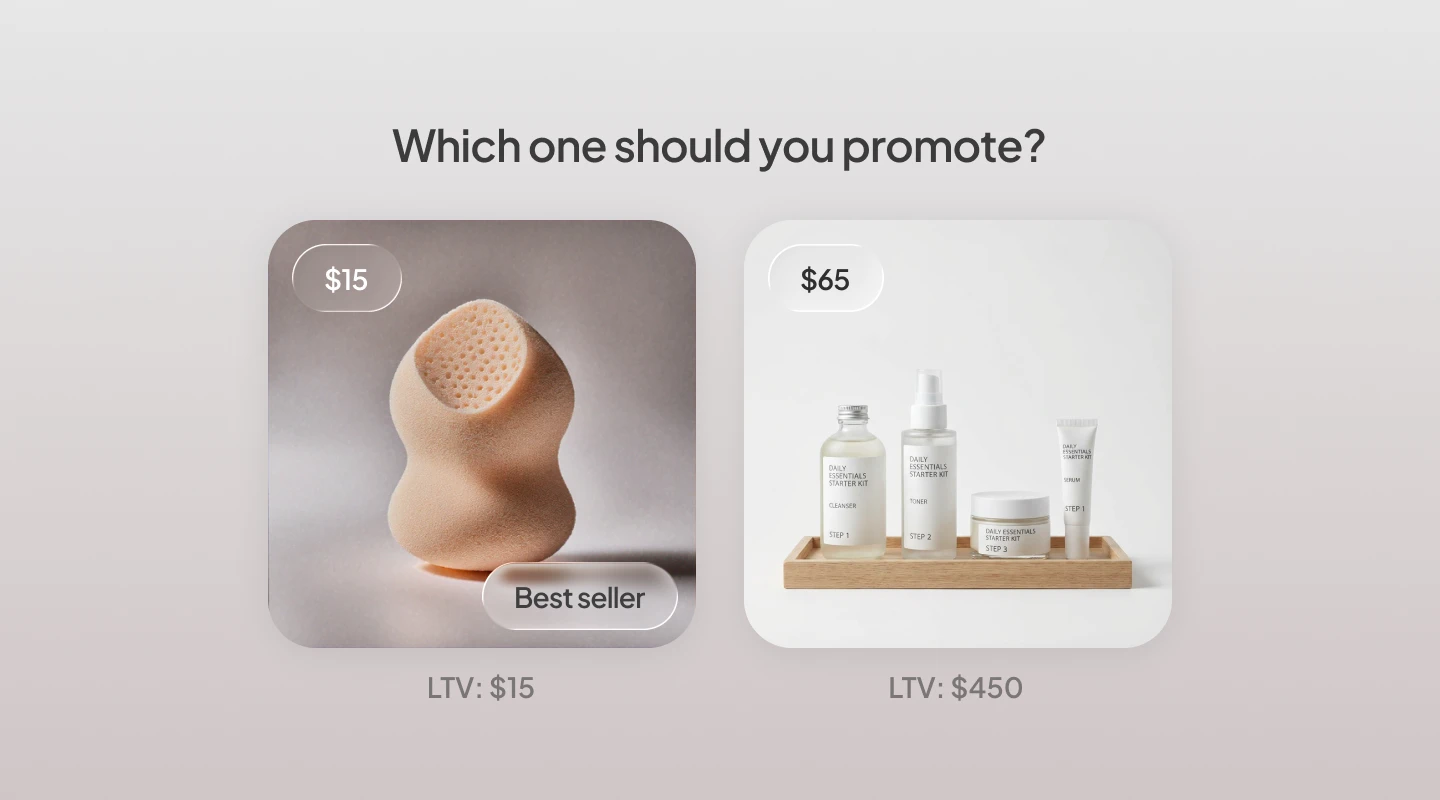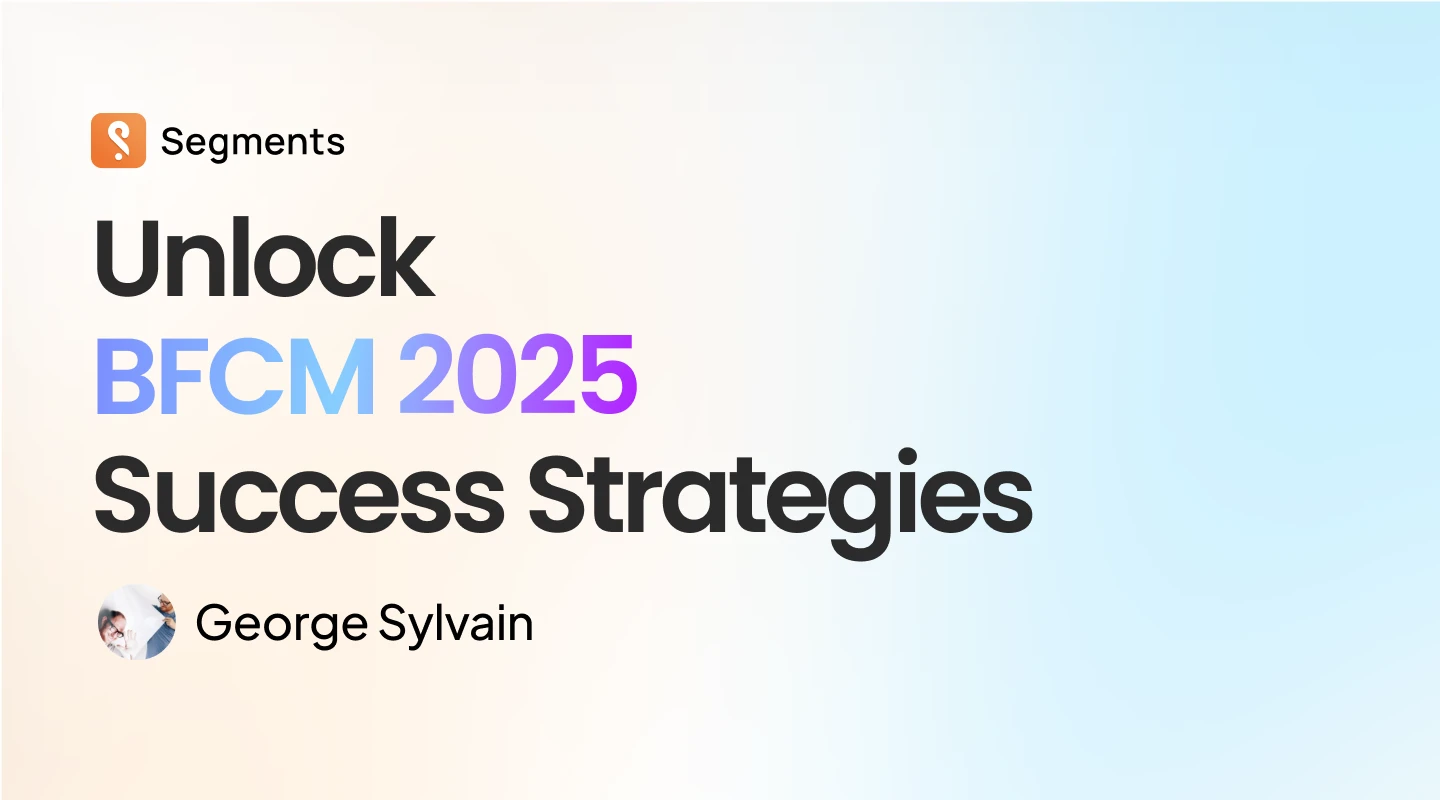
As a data science company, data is in our DNA. And this year, the data we’ve looked at tells an interesting story for retailers — sales have slowed down considerably in 2021 vs 2020.
From January to September 2021, we’re seeing a ~14% decrease in total orders across our customers compared to the same time period last year. We found over a quarter of the stores we analyzed saw a drop off of more than 50% in orders vs. last year. With many ecommerce brands experiencing a slowdown and all the privacy changes introduced by Apple and Google, it’s never been more important to have a structured plan together to acquire new customers and better engage your existing customers.
To deliver meaningful insights for this BFCM and holiday season, we’ve deep-dived into millions of orders across our customers to see what’s working and what sets the top performing brands apart. Our analysis covers $430 million in e-commerce sales across 5 million orders.
Our major takeaways that can help drive your BFCM 2021 marketing strategy cover:
- The impact that first-time vs. returning customers have on BFCM sales
- Customer retention and why it’s so important to keep your existing customers
- Buy Now, Pay Later payment options and how it affects your BFCM sales
Read on to see what insights we found in the data. We also include actionable marketing recommendations you can implement today...proven strategies that have worked for top-performing brands!
Returning customers drive higher profits
Across the brands we analyzed, new customer acquisition was top of mind and the biggest use of marketing ad dollars in 2021; however, a number of brands admitted they ignored existing customers and didn’t focus as much on channels like Email, SMS, and audience-based retargeting.
So why is concentrating on existing customers important?
It’s commonly known that the cost of acquiring a new customer is six to seven times more than retaining an existing customer.
As a result of the Coronavirus pandemic, more marketers are focussing on customer retention, with more than twice as many CMOs choosing retention goals over acquisition.
Out of the stores analyzed, the top revenue generating customers drove 52% of BFCM sales in 2020 and these were ALL customers who engaged with the brand pre-BFCM. The difference is a bit starker from a financial perspective, with 55% of revenue generated by customers who already had a relationship with the brand. So NOT focusing on your existing customer segments can cost you dearly in the long run.
In the graph below, we’ve broken down orders and revenue into two buckets: first-time customers and returning customers.
Key takeaway 1: More than half of the revenue is from returning customers
- 52% of all orders in BFCM are coming from returning customers
- 55% of revenue in BFCM is coming from returning customers

Next, we focused just on the returning customers to try to understand who these customers are.
Key takeaway 2: Recent purchaser are likely to buy again, as much as tenured customers
- Brands see higher revenue from recent customers (i.e. customers whose last purchase with the brand was within the last 30-45 days). The more recently you’ve engaged with the customer, the more likely they will be to come back and purchase again.
- Returning customers from month 2+ (i.e. customers whose last purchase was at least 2 months ago) collectively make up the other half of revenue.
- Keeping customers engaged should be a key long term objective as returning customers make up over 55% of overall revenue
Action 👉 sync returning customers into your email marketing platform, Facebook, and Googles via our native integration to upsell and cross-sell these customers complimentary products based on their purchase or aftercare products.
Action 👉 leverage email marketing automations to target recent customers with attractive aftercare offers.
.png)
Next, we took a look at how much these customers are buying by looking at Average Order Values during BFCM.
Below is a graph looking at the Average Order Value for all first time customers vs returning customers.
Key takeaway 3: Returning customers spend more per order
- Returning buyers on average spend 1.1x more than first time buyers
.png)
In the next section, we explore what happens after BFCM.
Post BFCM
We’ve analyzed the revenue generated by BFCM customers 90 days AFTER the BFCM weekend. We also broke down the data into customers whose first purchase was during BFCM (so-called “First-time BFCM customers”) and compared the number to customers whose first purchase was before BFCM (so-called “Returning BFCM customers”). We can see that returning customers spend nearly 4 times more than “first time BFCM customers”.
Key takeaway 4: Returning customers continue to buy more post-BFCM
- Returning customers who shop during BFCM further go on to spend a lot more after BFCM, especially when compared to customers whose first purchase was during BFCM weekend (1.5x more average spend 90 days after BFCM).
.png)
Action 👉 target your highest spending customers with an email inviting them to pre-sales deals and new releases...basically anything to really make them feel special for spending with your store
Action 👉 sync your one timers into Facebook Ads and your email service provider and target them with an offer (discount, bundle, etc) to get them to repurchase. It’s statistically proven that returning customers will help increase your store's profitability.
The following metrics show that the customers who are coming back to your store and shopping during BFCM are more likely to come back much more frequently (Higher Avg. Number of Orders) and Returning customers generate more revenue per user even after BFCM

We hope the data above and takeaways have been useful. To recap our key message: Acquiring new customers is paramount BUT don’t forget your existing customers — engage these customers often on email, SMS, digital advertising, organic social, and really any channel that keeps them connected with your brand.
To help you with ideas on re-engagement, we’ve outlined a few customer segments to target and provided actionable marketing suggestions with a few examples we really like:
1. Recent purchasers
Segments definition: These are customers who have purchased from your store recently.
Goal 👉 Engage recent purchasers with personalized cross-sell products
Action 👉 sync these customers into your email marketing platform and Facebook to upsell and cross-sell these customers complimentary products based on their purchase or aftercare products.
Here’s an example of personalized cross-selling email from Remarkety targeting recent customers.

2. High spenders
Segments definition: These customers are, as the segment name suggests, customers who’ve spent the most on your store.
Goal 👉 Make your high spenders feel special and give them VIP treatment with access to exclusive offers
Action 👉 target your highest spending customers with an email inviting them to exclusive deals, new releases, basically anything to really make them feel special for spending with your store
Here’s an example from Coconut Lane that gives their high spending VIP customers access to an exclusive family-and-friends sale.

3. One timers
Segments definition: These are customers who’ve purchased from you once and they are prime for your brand to retain to increase customer retention.
Goal 👉 You want to turn your one-timers into repeat customers
Action 👉 sync your one timers into Facebook Ads and your email service provider. Target them with an offer (discount, bundle, etc) to get them to repurchase. It’s statistically proven that returning customers will help increase your store's profitability.
Here’s an example from Wildly Good of a special “Buy 2 Get 1” offer that creates a sense of urgency.

4. Active Loyals
Segments definition: These are customers who are loyal to your brand and you need to ensure these customers stay happy!
Goal 👉 You want to keep these customers happy and engaged
Tactic 👉 Depending on your marketing campaigns, you can either add this audience as a “negative or excluded audience” on Facebook ads to ensure they aren’t bombarded by offers they’ve already used or discounts they’ve used. On email, you can request these customers to provide brand feedback and/or send targeted one-off campaigns to give early access to new collections and exclusives
Here’s a snippet from Monki’s email to loyal customers that shows their appreciation and explains why they are VIP.

5. Churned Customers
Segments definition: These are customers who have churned and aren’t purchasing from your store any longer
Goal 👉 You want to attract these customers back to purchase from your store again
Tactic 👉 Once the audience is synced into Facebook Ads and your email provider send a targeted email campaign and activate Facebook ads with the same offer message enticing these customers to purchase from your store again (Pro tip - remember to create a new campaign in Facebook Ads and to “tag” the segment in your email provider to make reporting super easy)
This example from Birchbox uses a free gift worth almost $30 to try and bring someone back to their beauty and cosmetics subscription.

Interested in learning more about BFCM-specific customer segments and actionable marketing strategies you can implement today? Register and join our free webinar BFCM 2021: 2x Your Conversions with Data-Driven Customer Segmentation on October 13th, 12PM EDT.
Afterpay: A Bane or Boon
With the 101 different “Buy Now, Pay Later” (BNPL) payment solutions out in the market for customers to choose from, our team wondered whether customers using these payment solutions were valuable or not?
We reviewed our top performing stores that have AfterPay as a payment option, and found that these stores see significant transaction volumes coming through BNPL services during BFCM. More than 10% of all revenue came from purchases paid with Afterpay.
Our team found Afterpay was growing as a % of orders, but does it actually encourage larger orders?
.png)
Reviewing the average order value (AOV) for orders that used Shopify payments or Paypal vs orders of those made using Afterpay we clearly see that users shopping via AfterPay have a higher Average Order Value.
.png)
Furthermore, we peeked into the future and looked at the customers behavior over the next 90 days (post-BFCM) to see how they compare to customers who DID NOT use Afterpay. There were a lot more non-Afterpay customers so to fairly compare our metrics, we’ve taken a look at AOV and ARPU for these two types of customers.
Across the stores we analyzed, when we look at the segment of customers who purchased using Afterpay during BFCM and compare it to the segment of customers who used a non-Afterpay payment method, Afterpay customers boasted an increased 33% average revenue per user.
.png)
Key takeaway:
- The Average Revenue per User is massive in Afterpay customers, even long after BFCM

Getting ready to crush BFCM 2021
Be more data-driven this holiday season and use data to inform your BFCM 2021 marketing strategy. To recap our key findings:
- Returning customers lead to higher profits, so engaging with your regular customers is important. Customer loyalty should be a major long-term goal as returning customers make up over 55% of total BFCM sales. Interact with your repeat customers often via email, text messages, digital advertising, social media, and any channel that keeps them in touch with your brand.
- Buy Now, Pay Later customers have both a higher Average Order Value and Average Revenue per User. Consider implementing a BNPL payment option for BFCM 2021.
Data is valuable. The better you understand your customers and how they buy, the more you can inform your marketing strategy.
Check out the Segments app for easy to use actionable insights to grow your store revenue and don’t forget to follow us on LinkedIn for more ecommerce tips and tricks!
Interested in learning more about BFCM-specific customer segments and actionable marketing strategies you can implement today? Register and join our free webinar BFCM 2021: 2x Your Conversions with Data-Driven Customer Segmentation on October 13th, 12PM EDT.







